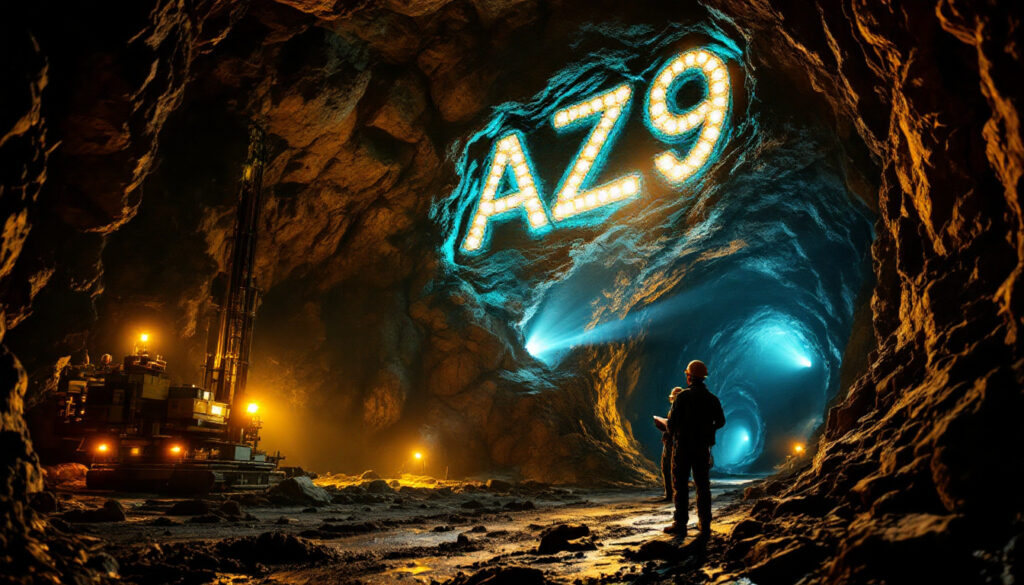Oval Cu-Ni-PGE Discovery Expands with High-Grade Sulphide Zones
Asian Battery Metals (ASX: AZ9) has announced significant progress in its Phase 3 diamond drilling campaign at the Asian Battery Metals Oval sulphide discovery in Mongolia, with multiple high-grade sulphide intercepts confirming the potential scale of this emerging mineral system.
Game-Changing Discovery of Potential Feeder System
The most significant development is the discovery of what appears to be a feeder dyke system connected to a deeper magma chamber. Drillhole OVD032 intersected 1.8m of high-grade sulphide from 293.7m to 295.2m, including 0.5m of semi-massive sulphide, representing the deepest mineralisation encountered at Oval to date.
This breakthrough provides critical insights into the magmatic plumbing system that formed the Oval deposit. The intersection represents a possible channel way to a deeper, potentially mineralised magma chamber.
"The results from OVD032 and the deeper part of OVD033 are a game-changer for the Oval discovery in understanding the potential pathway of the magmatic conduit," said Gan-Ochir Zunduisuren, Managing Director of Asian Battery Metals.
Impressive High-Grade Intercepts Continue
The drilling programme has delivered several noteworthy sulphide intercepts:
- OVD033: 28.7m of high-grade, net-textured sulphide containing 2.9% chalcopyrite, 18.3% pyrrhotite, and 2.5% pyrite from 91.3m to 120.0m
- OVD034: 1.3m of massive sulphide with 12.0% chalcopyrite, 74.0% pyrrhotite, and 6.0% pyrite from 79.6m
These visual estimates suggest continuation of high-grade mineralisation previously intercepted at Oval, with assay results pending. The company reports that the visual findings are consistent with previous high-grade intercepts at the Asian Battery Metals Oval sulphide discovery.
Understanding Magmatic Sulphide Deposits
Magmatic sulphide deposits like Oval form through specific geological processes that concentrate valuable metals. These deposits develop when sulphur-rich magma cools and crystallises, allowing dense metal-bearing sulphides to settle and concentrate in specific zones.
Formation Process
Magmatic sulphide deposits typically follow this formation sequence:
- Magma Generation: Metal-rich magma forms deep within the Earth
- Magma Transport: The magma rises through the crust via feeder channels or dykes
- Sulphur Incorporation: The magma interacts with surrounding rocks, incorporating sulphur
- Sulphide Saturation: When enough sulphur is present, sulphide minerals begin to form
- Gravity Separation: Dense sulphide minerals settle and concentrate in specific zones
- Crystallisation: As the system cools, the metal-bearing sulphides solidify into deposits
Significance of Feeder Dykes
The presence of a feeder dyke at Oval is particularly significant as these structures transport metal-rich magma from deeper chambers to shallower emplacement zones. At Oval, the potential feeder dyke identified in OVD032 shows:
- Symmetrical zoning with gabbro-diorite margins
- Distinct alteration pattern in surrounding country rock
- Connection to deeper magmatic sources
The "spotted rock" alteration observed surrounding both the feeder dyke and main Asian Battery Metals Oval sulphide discovery provides valuable evidence of magma-crustal interaction. This alteration pattern suggests the magma incorporated sulphur and volatiles from surrounding country rock, a process that often enhances metal concentration in magmatic sulphide systems.
The discovery of what appears to be a feeder system suggests the potential for additional mineralisation at depth, potentially connected to a larger magma chamber that could host further economic mineralisation.
Exploration Pathway and Future Plans
Asian Battery Metals has outlined a comprehensive exploration strategy focusing on:
- Testing the newly identified conduit feeder and potential magma chamber with deeper geophysics and drilling
- Continuing regional step-out drilling (currently underway)
- Conducting ground-based SAMSON FLEM surveys to better map conductive bodies
- Analysis of assay results expected from late May 2025
The company has completed 1,789.6m across seven diamond drill holes at Oval, with core logging and sampling in progress. Additionally, downhole electromagnetic (DHEM) surveys have confirmed new conductive plates at depth, refining target zones for the next phase of drilling.
"The continued successful results confirm our belief about the potential emerging scale across the broader Yambat Project," noted Mr Zunduisuren.
Investment Significance
The Oval discovery is rapidly emerging as a significant Cu-Ni-PGE project with several factors making it compelling for investors:
1. Expanding Scale
The identification of a feeder system suggests the mineralisation footprint may be significantly larger than initially thought. The presence of multiple gabbro-diorite dykes at depth in both OVD032 and OVD033 indicates an extensive magmatic system with potential for additional mineralisation.
2. High-Grade Nature
Visual observations of massive and net-textured sulphides consistently show high sulphide mineral content. The recent intercepts include:
| Drillhole | Intercept | Chalcopyrite % | Pyrrhotite % | Pyrite % | Type |
|---|---|---|---|---|---|
| OVD033 | 28.7m @ 91.3m | 2.9% | 18.3% | 2.5% | Net-textured |
| OVD034 | 1.3m @ 79.6m | 12.0% | 74.0% | 6.0% | Massive |
| OVD032 | 0.5m @ 293.7m | 8.0% | 27.0% | 1.0% | Semi-massive |
Note: Visual estimates of mineral abundance should not be considered a substitute for laboratory analysis.
3. Critical Metals Focus
The deposit contains copper, nickel, and platinum group elements—all critical metals for the energy transition. These metals play essential roles in:
- Electric vehicle batteries (nickel)
- Electrical conductors and motors (copper)
- Catalytic converters and fuel cells (platinum group elements)
4. Regional Potential
Ongoing exploration across the broader Yambat Project suggests district-scale potential. The company is currently conducting regional step-out drilling, with assay results expected from late May 2025.
Why Investors Should Follow Asian Battery Metals
Asian Battery Metals represents an opportunity to invest in an emerging discovery in Mongolia, a jurisdiction that hosts world-class copper deposits. The company's Asian Battery Metals Oval sulphide discovery shows geological characteristics similar to other major magmatic sulphide deposits globally.
With each phase of drilling revealing more extensive mineralisation, Asian Battery Metals is positioned at a critical stage where confirmatory assay results and expanded drilling could substantially increase the known resource potential. The company's focus on metals critical to the energy transition adds strategic relevance in current markets.
Near-term catalysts include assay results expected from late May 2025, ongoing regional drilling outcomes, and downhole electromagnetic (DHEM) surveys that will guide the next phase of exploration, providing multiple potential value-driving events in the coming months.
The company's systematic approach to exploration, including advanced geophysical techniques and targeted drilling, demonstrates a methodical strategy to define the full extent of the Oval system and evaluate its economic potential.
Ready to Invest in the Next Critical Metals Discovery?
Discover why Asian Battery Metals' Oval Cu-Ni-PGE project in Mongolia could be your next significant investment opportunity. With expanding high-grade sulphide zones, a newly discovered feeder system, and multiple critical metals essential to the energy transition, this emerging discovery warrants serious attention. To learn more about Asian Battery Metals (ASX: AZ9) and its promising Oval discovery, visit www.asianbatterymetals.com today and position yourself ahead of forthcoming assay results expected from late May 2025.




